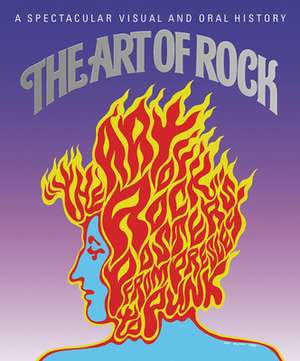The Art of Rock: Posters from Presley to Punk: Tiny Folio
Editors of Abbeville Pressen Limba Engleză Hardback – 28 feb 1999
From the 1950s through today, here is the complete visual history of the rock concert poster: the funkiest bills advertising Elvis, B.B. King, and Howlin' Wolf; the multicolored psychedelic hallucinations promoting the Grateful Dead, Dylan, and the Doors; the deliciously tasteless art for the Sex Pistols, Crime, and the Clash. From the Red Dog Saloon in San Francisco, where the psychedelic scene started, to CBGB, New York's punk Mecca, and beyond. 1,500 images searched out world-wide from clubs, attics, and bedrooms—as well as more formal collections—are reproduced in their original blazing colors.
Replete with firsthand history—including exclusive interviews with scores of insiders, poster artists, musicians, and promoters—this is the ultimate high for the rock music fan, required reading for the poster collector, a treasure trove for the graphic artist, and a riotous feast for anyone who digs pop culture.
Replete with firsthand history—including exclusive interviews with scores of insiders, poster artists, musicians, and promoters—this is the ultimate high for the rock music fan, required reading for the poster collector, a treasure trove for the graphic artist, and a riotous feast for anyone who digs pop culture.
Din seria Tiny Folio
-
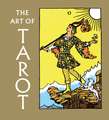 Preț: 74.82 lei
Preț: 74.82 lei -
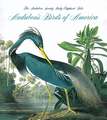 Preț: 70.21 lei
Preț: 70.21 lei - 11%
 Preț: 379.29 lei
Preț: 379.29 lei -
 Preț: 68.68 lei
Preț: 68.68 lei -
 Preț: 68.93 lei
Preț: 68.93 lei -
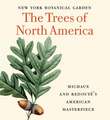 Preț: 75.01 lei
Preț: 75.01 lei -
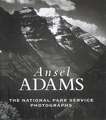 Preț: 69.09 lei
Preț: 69.09 lei -
 Preț: 68.93 lei
Preț: 68.93 lei -
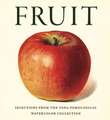 Preț: 68.99 lei
Preț: 68.99 lei -
 Preț: 69.46 lei
Preț: 69.46 lei -
 Preț: 68.78 lei
Preț: 68.78 lei -
 Preț: 61.76 lei
Preț: 61.76 lei -
 Preț: 62.83 lei
Preț: 62.83 lei -
 Preț: 66.78 lei
Preț: 66.78 lei -
 Preț: 69.05 lei
Preț: 69.05 lei - 19%
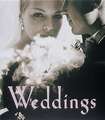 Preț: 28.20 lei
Preț: 28.20 lei -
 Preț: 59.55 lei
Preț: 59.55 lei -
 Preț: 68.46 lei
Preț: 68.46 lei - 20%
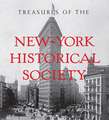 Preț: 55.20 lei
Preț: 55.20 lei - 24%
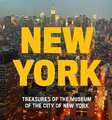 Preț: 50.75 lei
Preț: 50.75 lei - 21%
 Preț: 53.59 lei
Preț: 53.59 lei - 20%
 Preț: 55.20 lei
Preț: 55.20 lei - 20%
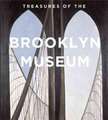 Preț: 55.20 lei
Preț: 55.20 lei
Preț: 65.00 lei
Preț vechi: 69.14 lei
-6% Nou
Puncte Express: 98
Preț estimativ în valută:
12.44€ • 12.91$ • 10.40£
12.44€ • 12.91$ • 10.40£
Carte indisponibilă temporar
Doresc să fiu notificat când acest titlu va fi disponibil:
Se trimite...
Preluare comenzi: 021 569.72.76
Specificații
ISBN-13: 9780789206114
ISBN-10: 0789206110
Pagini: 348
Dimensiuni: 102 x 111 x 29 mm
Greutate: 0.32 kg
Ediția:Mini.
Editura: Abbeville Publishing Group
Colecția Abbeville Press
Seria Tiny Folio
ISBN-10: 0789206110
Pagini: 348
Dimensiuni: 102 x 111 x 29 mm
Greutate: 0.32 kg
Ediția:Mini.
Editura: Abbeville Publishing Group
Colecția Abbeville Press
Seria Tiny Folio
Cuprins
Introduction 7
1. Roots 11
2. The Psychedelic Years in San Francisco 53
3. The Psychedelic Years in Southern California and the Rest of the World 161
4. The Mainstream 215
5. The New Music 295
Appendix: The Poster Shops 347
1. Roots 11
2. The Psychedelic Years in San Francisco 53
3. The Psychedelic Years in Southern California and the Rest of the World 161
4. The Mainstream 215
5. The New Music 295
Appendix: The Poster Shops 347
Recenzii
“Fascinating and accessible . . . useful for both the scholar and the fan” —New York Times
“A literate, loving look at the poster’s evolution” —Chicago Tribune
“It flat-out rocks.” —Newsweek
“Widely considered the genre’s original bible.” —San Francisco Chronicle
“[This] exhaustively researched compilation brings together more than thirty years’ worth of the best and brightest rock posters and art work.” —Rolling Stone
“There really wasn’t such a thing as a rock poster expert until Paul Grushkin established himself as one with his stellar . . . Art of Rock” —CMJ New Music Monthly
“Rock ‘n’ roll is here to stay, and the old posters advertising live shows seem to be sticking around too.” —The Wall Street Journal
“A literate, loving look at the poster’s evolution” —Chicago Tribune
“It flat-out rocks.” —Newsweek
“Widely considered the genre’s original bible.” —San Francisco Chronicle
“[This] exhaustively researched compilation brings together more than thirty years’ worth of the best and brightest rock posters and art work.” —Rolling Stone
“There really wasn’t such a thing as a rock poster expert until Paul Grushkin established himself as one with his stellar . . . Art of Rock” —CMJ New Music Monthly
“Rock ‘n’ roll is here to stay, and the old posters advertising live shows seem to be sticking around too.” —The Wall Street Journal
Notă biografică
Paul Grushkin, a noted rock-music historian, has been collecting concert posters since 1969. His other books include The Art of Modern Rock and Rockin’ Down the Highway: The Cars and People That Made Rock Roll.
Extras
INTRODUCTION
A plague of crazed critics, curators, and graduate students will descend upon me if I declare that rock posters are great modern art. So what I’ll tell you is that they inspire extraordinary love and passion and that, unlike most other modern artworks, they are truly popular: thousands of people all around the world now avidly collect them.
Many of the posters are exceptional graphic achievements: their printing employs the highest skills, and the poster artists themselves have extended the limits of their medium. These artists and printers were innovators bent on bringing forth something manifestly new and exciting.
Rock posters have been around as long as rock music has—about thirty-five years. Not since Europe of the 1930s has poster art played so significant a role in promoting popular entertainment. Moreover, rock posters have become a leading popular art form that has greatly influenced such related graphic fields as advertising. Rock art is tied directly to the changing music of a thirty-five-year period; simply put, because there are rock concerts, there are inevitably rock posters. It is also true that rock music has reflected, even as it has helped to shape, its thirty-five-year span of American and international culture. And so the posters are a visual history not only of the music but also of a little bit of the world that produced the music.
Rock has many roots and branches, and what this books calls rock poster art also embraces other forms of popular music related to rock. Black music had an obvious and great effect, as did country. The posters help to tell how and why this is so. The book begins in the mid-1950s, when rock was very young and when for the most part black people were still setting the popular music trends followed by various white performers. By 1955, swing-jazz, jump bands, and early rhythm and blues had yielded to the likes of James Brown and, a little later, Elvis Presley. With the sixties came the Temptations and Aretha Franklin, then Bob Dylan, and the storming of America by “British Invasion” groups like the Beatles, the Rolling Stones, the Animals, Gerry and the Pacemakers, Herman’s Hermits, and so on.
All the posters of rock’s early period—1955 to 1965—whether advertising white or black acts, were done in a “boxing style,” with heavy emphasis on key words—usually names—done in woodblock. Though plain pieces, these posters are nevertheless tremendously evocative. They have a luminous quality, a rich patina of age. They are not intentionally beautiful, but they capture rock’s first, vanished era perfectly and bring back memories of music that was raw and authentic. Here, they say, is where it all began.
Next came the psychedelic era of the mid- and late 1960s, extending into the very early 1970s. This was the Golden Age of the rock poster and one of the great flowerings of poster art in general. Partly the result of America’s response to the British Invasion, it began in San Francisco and Los Angeles, with such groups as the Charlatans, Country Joe and the Fish, the Byrds, the Doors, and the Grateful Dead. Then it came in a great rush from all other areas of the country. The new music led to a new school of rock poster art, produced in great quantity and received with tremendous enthusiasm. Vivid and imaginative, it stands in dramatic contrast to the art of rock’s earlier period.
After the early 1970s, psychedelic music and art—associated with counterculture communities and hippie communes— began to yield to a mainstream increasingly dominated by music industry businessmen. By the mid-1970s, promoting rock was often a corporate rather than a communal endeavor, and the mass-media appeals of newspaper and magazine ads replaced much poster art. What posters did exist displayed a professional maturity and were often effective translations of music into graphic terms. But, like the music itself, the rock poster, now more or less a corporate entity, had lost much of its appealing naivete.
Beginning in the late 1970s and continuing in varying degrees into the present, a revolution has been under way, a move against the mainstream. Punks and new wavers became rock’s cutting edge, and their aggressive sound has been accompanied by a return to street-scorching lamppost art. Unlike psychedelic art, punk and new wave posters aren’t meant to promote inward exploration. Nor are they intended to be displayed on the bedroom or living room wall. They more closely resemble the early rhythm and blues bills and, like them, are meant to be seen outside, on the street. In some purely unconscious way, rock art has thus come full circle.
In the early days of the psychedelic scene, poster art was available to even the most casual rock fan. It was for sale in many stores, like the Print Mint, the Psychedelic Shop, or Ben Friedman’s Postermat, all in San Francisco. It was also being given away by rock promoters like Bill Graham and by the Family Dog collective, both of whom even sent a poster man around to distribute the posters to head shops, the Berkeley campus, and other likely places. Graham’s posters for his shows at the Fillmore Auditorium and the Family Dog’s posters for theirs at the Avalon Ballroom are especially prized today.
After a time, Bill Graham and the Family Dog promoters could no longer afford to give away the large posters and instead sold them wholesale to stores, where the usual retail price, up through 1970 or so, was one dollar each.
The price of rock art has appreciated considerably since the 1960s. Original art—drawings, paintings, artists’ mechanicals (layouts from which posters are made)—now commands a hefty price, and quite a number of rare posters could cost a collector upward of five hundred dollars—even more, if the sale takes place on the East Coast. Fundamentally, however, rock art isn’t “high art”—it isn’t so exalted that it’s out of reach of even the novice collector.
A plague of crazed critics, curators, and graduate students will descend upon me if I declare that rock posters are great modern art. So what I’ll tell you is that they inspire extraordinary love and passion and that, unlike most other modern artworks, they are truly popular: thousands of people all around the world now avidly collect them.
Many of the posters are exceptional graphic achievements: their printing employs the highest skills, and the poster artists themselves have extended the limits of their medium. These artists and printers were innovators bent on bringing forth something manifestly new and exciting.
Rock posters have been around as long as rock music has—about thirty-five years. Not since Europe of the 1930s has poster art played so significant a role in promoting popular entertainment. Moreover, rock posters have become a leading popular art form that has greatly influenced such related graphic fields as advertising. Rock art is tied directly to the changing music of a thirty-five-year period; simply put, because there are rock concerts, there are inevitably rock posters. It is also true that rock music has reflected, even as it has helped to shape, its thirty-five-year span of American and international culture. And so the posters are a visual history not only of the music but also of a little bit of the world that produced the music.
Rock has many roots and branches, and what this books calls rock poster art also embraces other forms of popular music related to rock. Black music had an obvious and great effect, as did country. The posters help to tell how and why this is so. The book begins in the mid-1950s, when rock was very young and when for the most part black people were still setting the popular music trends followed by various white performers. By 1955, swing-jazz, jump bands, and early rhythm and blues had yielded to the likes of James Brown and, a little later, Elvis Presley. With the sixties came the Temptations and Aretha Franklin, then Bob Dylan, and the storming of America by “British Invasion” groups like the Beatles, the Rolling Stones, the Animals, Gerry and the Pacemakers, Herman’s Hermits, and so on.
All the posters of rock’s early period—1955 to 1965—whether advertising white or black acts, were done in a “boxing style,” with heavy emphasis on key words—usually names—done in woodblock. Though plain pieces, these posters are nevertheless tremendously evocative. They have a luminous quality, a rich patina of age. They are not intentionally beautiful, but they capture rock’s first, vanished era perfectly and bring back memories of music that was raw and authentic. Here, they say, is where it all began.
Next came the psychedelic era of the mid- and late 1960s, extending into the very early 1970s. This was the Golden Age of the rock poster and one of the great flowerings of poster art in general. Partly the result of America’s response to the British Invasion, it began in San Francisco and Los Angeles, with such groups as the Charlatans, Country Joe and the Fish, the Byrds, the Doors, and the Grateful Dead. Then it came in a great rush from all other areas of the country. The new music led to a new school of rock poster art, produced in great quantity and received with tremendous enthusiasm. Vivid and imaginative, it stands in dramatic contrast to the art of rock’s earlier period.
After the early 1970s, psychedelic music and art—associated with counterculture communities and hippie communes— began to yield to a mainstream increasingly dominated by music industry businessmen. By the mid-1970s, promoting rock was often a corporate rather than a communal endeavor, and the mass-media appeals of newspaper and magazine ads replaced much poster art. What posters did exist displayed a professional maturity and were often effective translations of music into graphic terms. But, like the music itself, the rock poster, now more or less a corporate entity, had lost much of its appealing naivete.
Beginning in the late 1970s and continuing in varying degrees into the present, a revolution has been under way, a move against the mainstream. Punks and new wavers became rock’s cutting edge, and their aggressive sound has been accompanied by a return to street-scorching lamppost art. Unlike psychedelic art, punk and new wave posters aren’t meant to promote inward exploration. Nor are they intended to be displayed on the bedroom or living room wall. They more closely resemble the early rhythm and blues bills and, like them, are meant to be seen outside, on the street. In some purely unconscious way, rock art has thus come full circle.
In the early days of the psychedelic scene, poster art was available to even the most casual rock fan. It was for sale in many stores, like the Print Mint, the Psychedelic Shop, or Ben Friedman’s Postermat, all in San Francisco. It was also being given away by rock promoters like Bill Graham and by the Family Dog collective, both of whom even sent a poster man around to distribute the posters to head shops, the Berkeley campus, and other likely places. Graham’s posters for his shows at the Fillmore Auditorium and the Family Dog’s posters for theirs at the Avalon Ballroom are especially prized today.
After a time, Bill Graham and the Family Dog promoters could no longer afford to give away the large posters and instead sold them wholesale to stores, where the usual retail price, up through 1970 or so, was one dollar each.
The price of rock art has appreciated considerably since the 1960s. Original art—drawings, paintings, artists’ mechanicals (layouts from which posters are made)—now commands a hefty price, and quite a number of rare posters could cost a collector upward of five hundred dollars—even more, if the sale takes place on the East Coast. Fundamentally, however, rock art isn’t “high art”—it isn’t so exalted that it’s out of reach of even the novice collector.
Descriere
A riotous feast of images that will give rock music fans a nostalgic high. Electric, outrageous, erotic, blatant, vital - 1,500 rock concert posters from the 1950s through today are reproduced in their original blazing colors in this complete visual history. It's the ultimate book for rock fans, poster collectors, or anyone who digs pop culture. 1,500 full-color illustrations, 100 black-and-white photographs.
